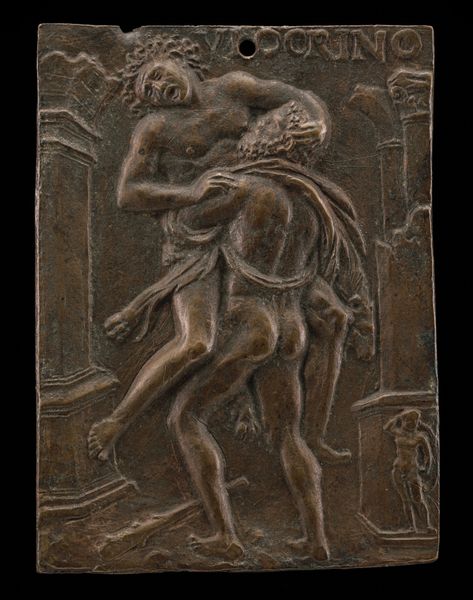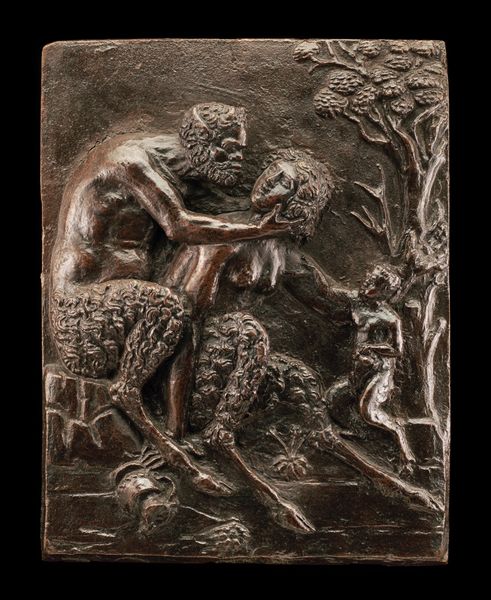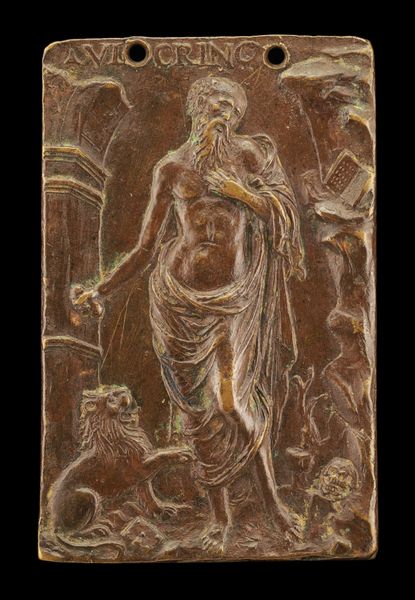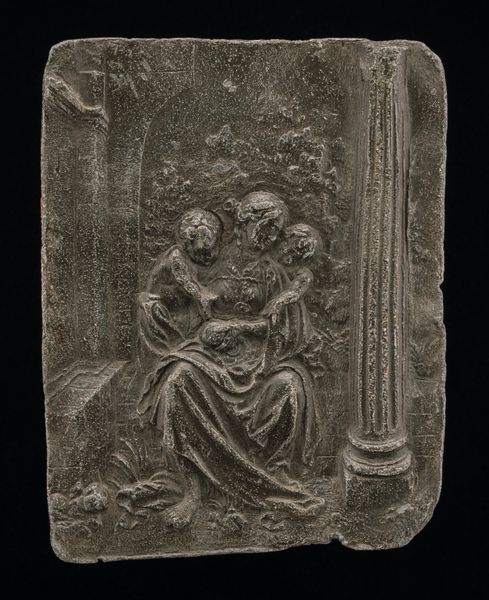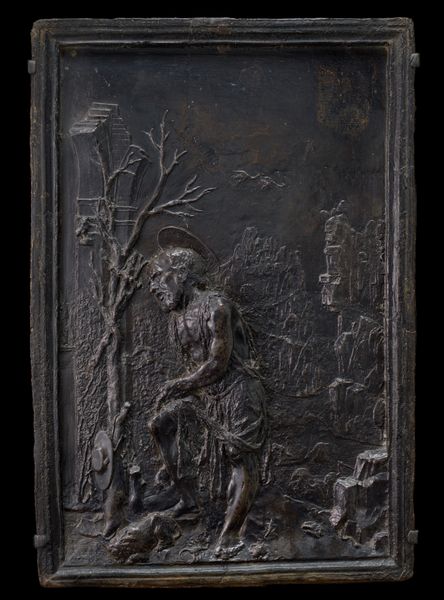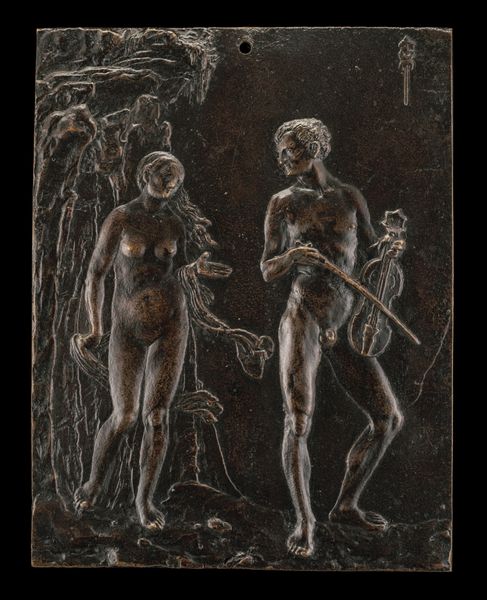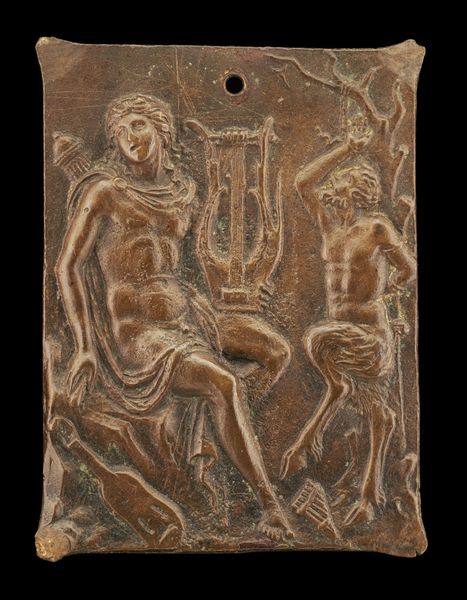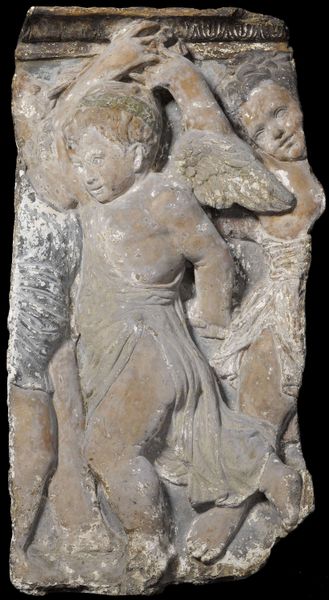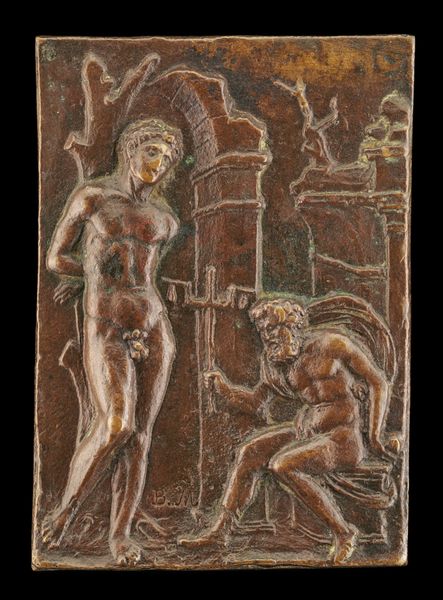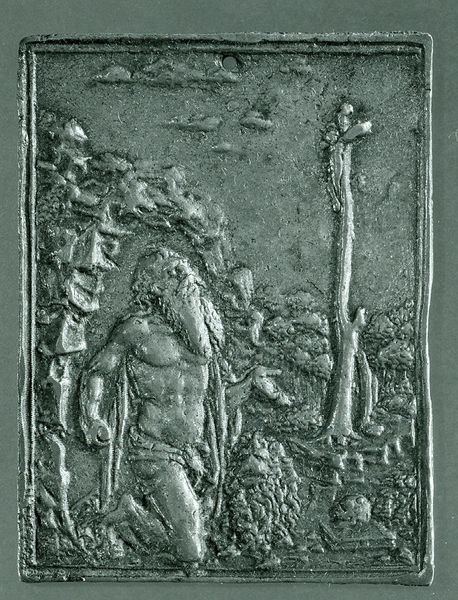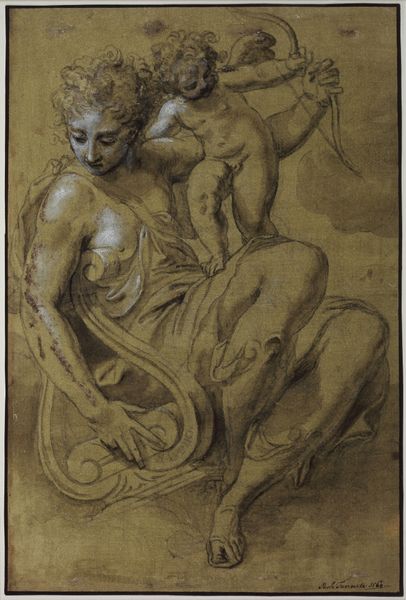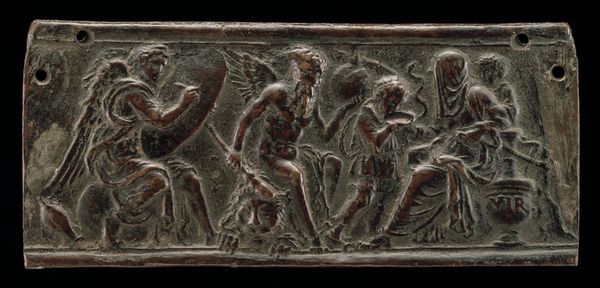
metal, sculpture
#
metal
#
sculpture
#
figuration
#
11_renaissance
#
sculpture
#
italian-renaissance
#
miniature
#
statue
Dimensions: overall: 5.3 x 3.8 cm (2 1/16 x 1 1/2 in.)
Copyright: National Gallery of Art: CC0 1.0
Curator: There's a somber cast to this small metal relief. The figure almost seems swallowed by the grayness. Editor: Indeed. What we are observing here is a plaquette, "A Putto Symbolizing the Muse Erato" by Peter Flötner, created around 1540 during the Renaissance. Curator: Erato, muse of lyric poetry... but rendered in metal, diminutive and subdued. What impact might this material and scale have on traditional notions of the Muse and her power? It shrinks the idea of inspiration somehow. Editor: The choice of metal likely reflects the period’s interest in permanence and the rising status of artisanal crafts. The Renaissance was obsessed with antiquity, and Flötner’s putto is heavily inspired by Greco-Roman depictions of Eros or Cupid. Curator: Ah, so it's evoking antiquity and eternalizing it via a modern symbol... It makes the image a memory itself, evoking nostalgia. I wonder, in placing a wreath on the figure's head and giving him a small violin to play, does it evoke the sweetness of verse and the melancholy it produces when performed? Editor: That's astute. Such plaques, especially in Northern Europe, became potent signifiers of artistic skill, sophistication, and the appreciation of classical learning. By circulating images of muses in domestic settings, the Italian Renaissance aesthetic could permeate wider European culture. They served to disseminate both a style and an ideal – one of refinement. Curator: Almost like a Renaissance version of a refrigerator magnet, spreading culture... Is the intent of that period similar to our use of digital technologies to share content nowadays? Ironic considering the longevity of metal versus our current digital ephemerality. Editor: Perhaps. Flötner cleverly combined antique sources with emerging cultural and political trends of the mid-16th century. By diminishing scale, and crafting it in metal he offered a novel way for the wealthy patron to signal both cultivation and affluence. Curator: It feels to me like he encapsulated cultural anxieties and aspirations within a miniature. Editor: I'm fascinated by the silent commentary on power structures embedded within the artwork. The dissemination of a Renaissance aesthetic and also an elite vision, I think, and of course, that is a visual rhetoric that we still participate in today.
Comments
No comments
Be the first to comment and join the conversation on the ultimate creative platform.
